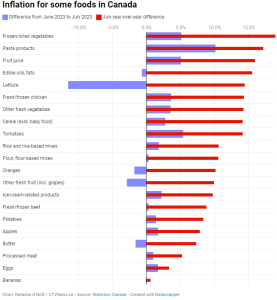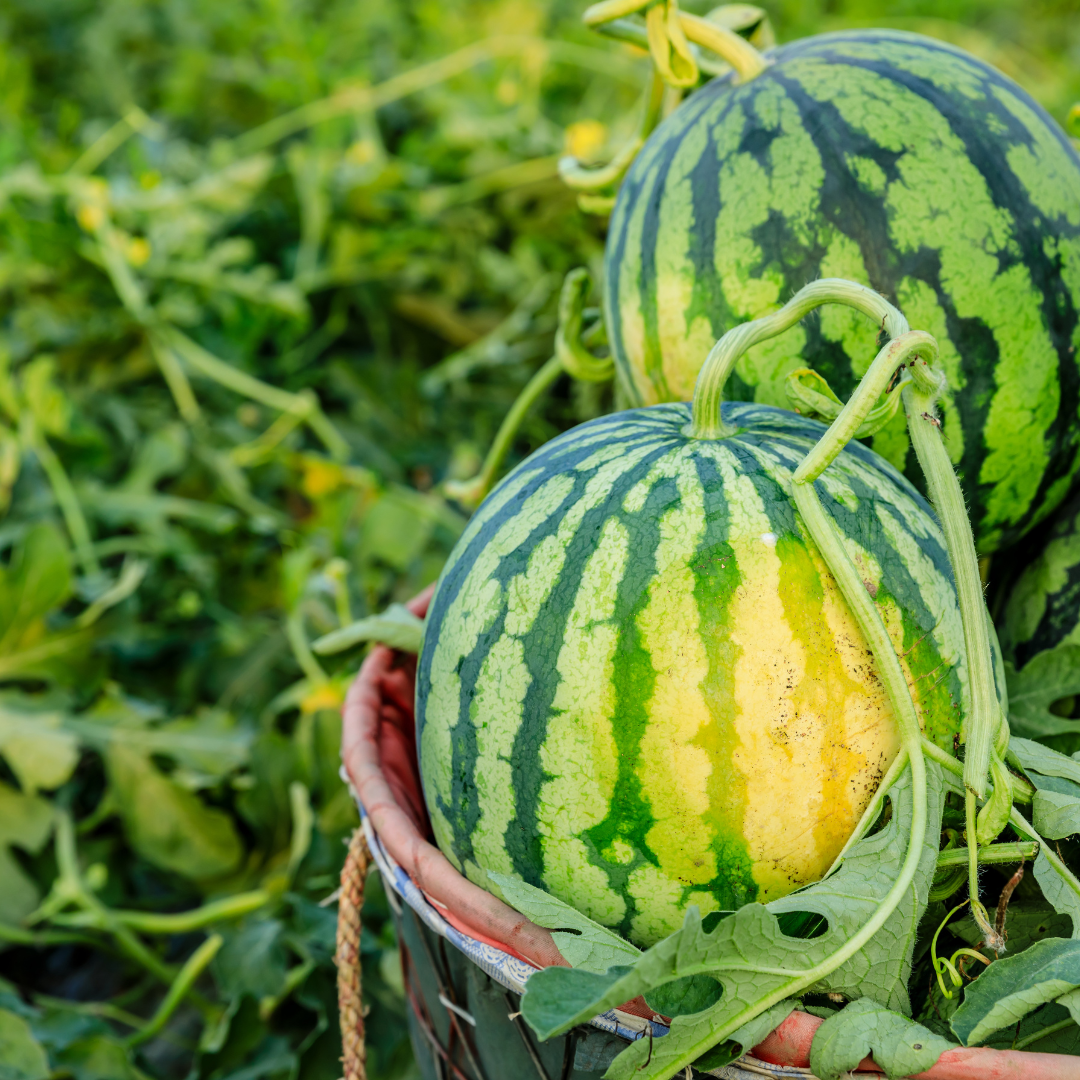Last weekend, I had my first slice of watermelon this summer.
That might seem pretty unremarkable, on the surface. But it was, for our house at least, a much-later-than-usual first taste of one of summer’s sweet, juicy, tasty tweets.
Why?
Because the price of watermelons at our local grocery store earlier this summer was, in a word, ridiculous.
$14.99 for a fruit that involves a fair bit of work and mess? No thanks!
Even when the price dropped a bit toward $10 early summer, I just couldn’t bring myself to shell out that amount.
It was only when the price fell below $8 late last week that I bit the bullet.
To be honest, this summer, we’ve paid more attention than ever before to food prices. If a price has seemed unreasonably high, we’ve made other plans and waited to see what another store was offering or for sales. (Peanut butter is a prime example – we’ll wait until it drops from $9 per jar to $6 and then buy a couple at once.)
When it comes to fruit and vegetables, prices have yo-yo’ed over recent months. On some grocery trips, I’ve found myself doing the math and opting for a platter of pre-cuts even if they don’t last as long as the standalone components might.
When I go to buy meat and protein, I might set out to buy beef or chicken. But if the sticker shock is too great, I might end up with fish or pork in my cart.
Price has never really been a driver in our food choices before. Yet for the first time in my adult life, price consciousness is trumping meal planning.
Overall, the price of food is up by nearly 9 percent year over year. This chart from CTV shows where food inflation remains ‘stickiest.’

Not even pasta and frozen peas are spared. In fact, price increases on those family go -to’s are leading the way.
More and more families are having challenges making ends meet.
Food bank usage only continues to increase. If your social media feeds are like mine, you may have seen a stream of hard-wrenching videos of well-paid people literally crying in their cars because they can’t pay their bills AND feed their families. On the other side of it, some food banks aren’t able to keep enough food stocked – even opting to cancel volunteer shifts.
Not all factors that are driving up inflation on things like food and fuel are within the Canadian government’s control. Far from it. But they are the source of real pain for people, especially those making $40/hour or less. Governments at all levels need to ensure they’re not doing anything to make matters worse. And folks are looking for solutions in some form, from anyone that will provide them.
It was against this backdrop that the federal cabinet met this week in Charlottetown.
Cost of living, housing and general affordability dominated discussions over three days of confabs, we’re told. But when the PM and his team emerged, he offered no details, no plan, and no hope.
Perhaps they’re saving those up for a Fall economic statement. Or, more frighteningly, perhaps the idea cupboard – like home pantries across the country – is growing increasingly bare.
Certainly, it would appear that federal funds aren’t flowing as freely as they once might have. The Finance Minister and Treasury Board President have reportedly told their colleagues that money’s tight and program cuts are required.
But is it too little too late?
There have been plenty of signs – in polls, in fundraising numbers, in media commentary, and in everyday conversations with exasperated fellow Canadians – that this is a government that is tiring on people and may have worn out its welcome for good.
Who knows? There is no federal election on the immediate horizon.
But after nearly nine years in office, it’s tough for any government to keep fresh, develop new ideas, and meaningfully change course. Summer polling shows the Trudeau Liberals now trailing badly and losing support in key regions and demographics that have been hardest hit by cost of living increases (and which have been key to past election victories).
If they can’t or won’t look at new approaches to fiscal and social policies that are hitting Canadian families squarely in the pocketbook, the PM and his team could be in for a rough ride and rude awakening. Voters are already shopping around for new and different options, and a new economic recipe to slow inflation and make life’s basic necessities – food, shelter, transportation – more affordable.

